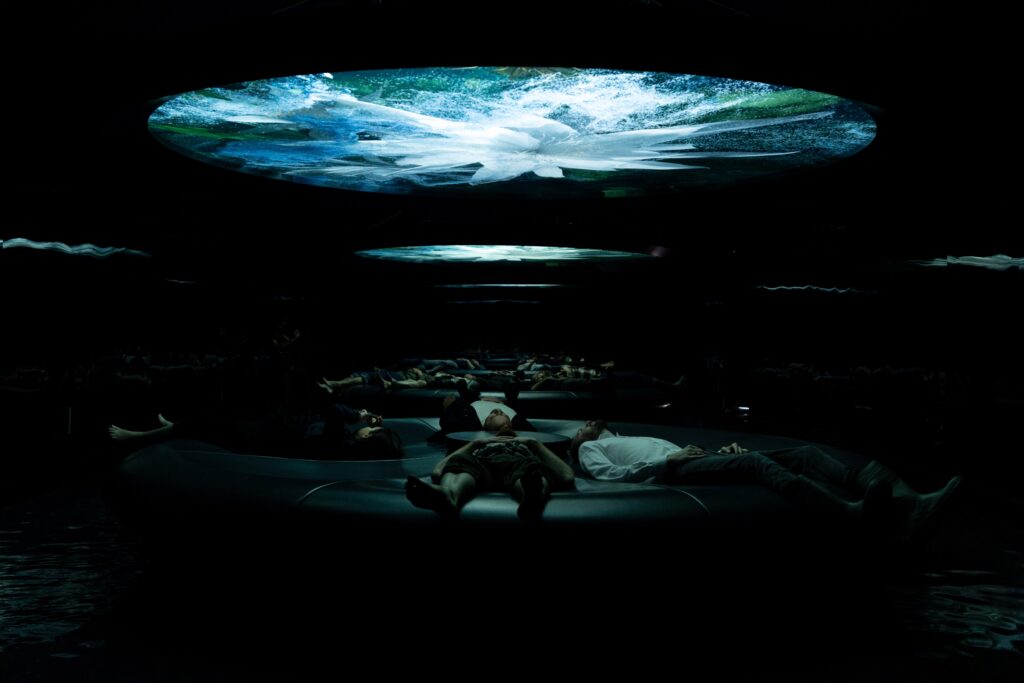
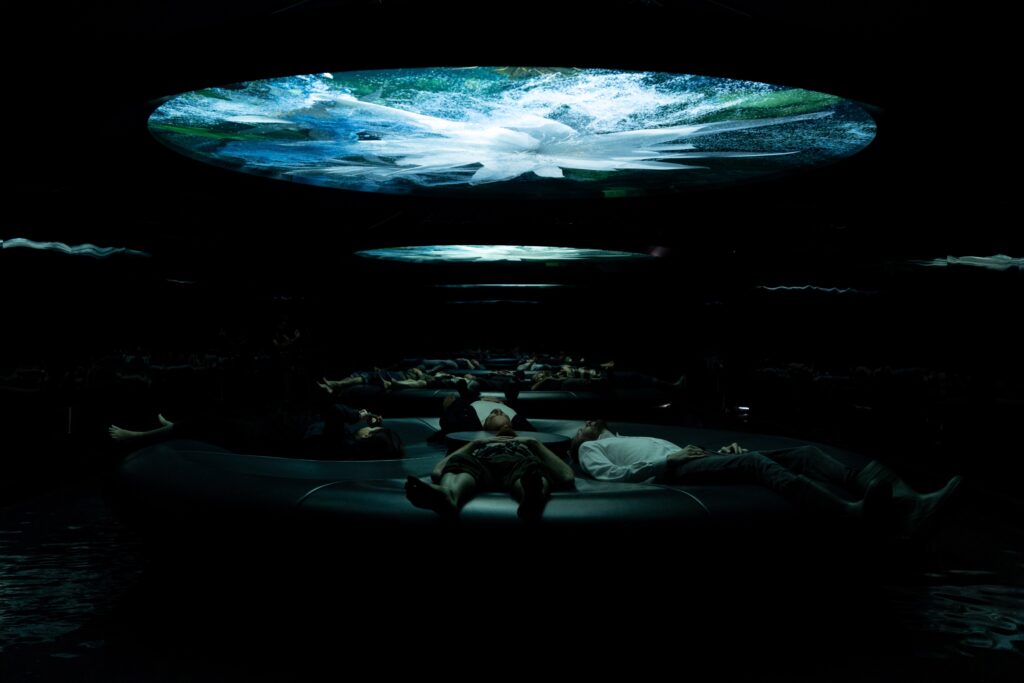
Forest Bathing: Lupuna
Forest Bathing: Lupuna is a multisensory installation that brings the public to the lush presence of the Lupuna tree through two spaces. The audience is invited to step through a waterfall into a sensorial experience where a tropical downpour saturates the senses through spacial audio, light and rain machines.
The multisensory installation brings the public to the lush presence of the Lupuna tree through two spaces. In the first participants step through a waterfall into a sensorial experience where a tropical downpour saturates the senses through spacial audio, light and rain machines.
Enquire about presenting this work
Forest Bathing: Lupuna is available as Edition at bitforms gallery

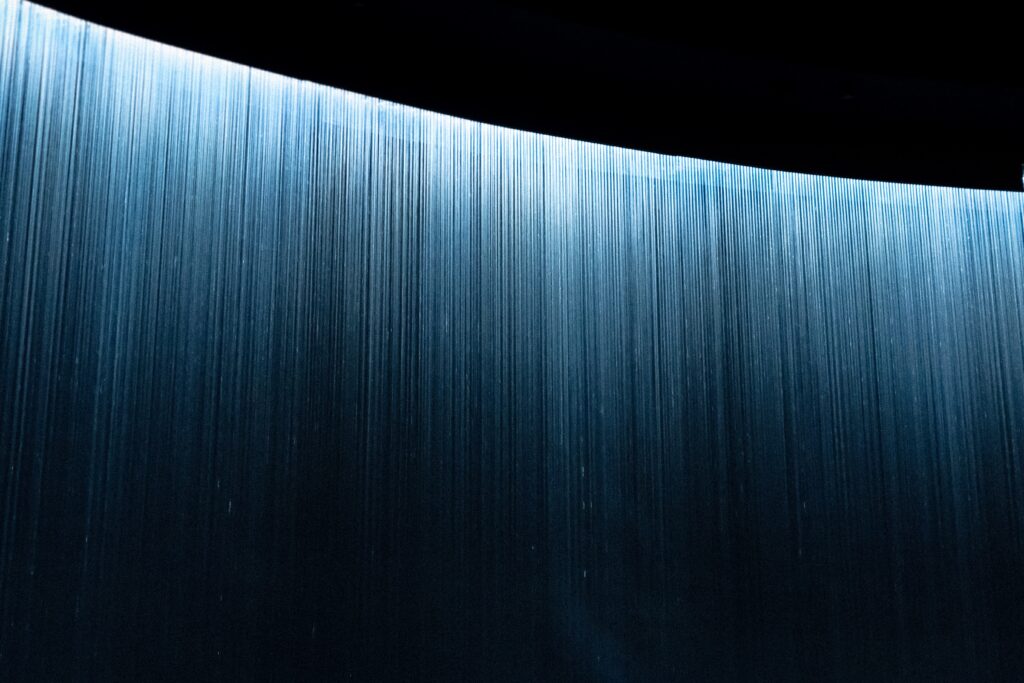
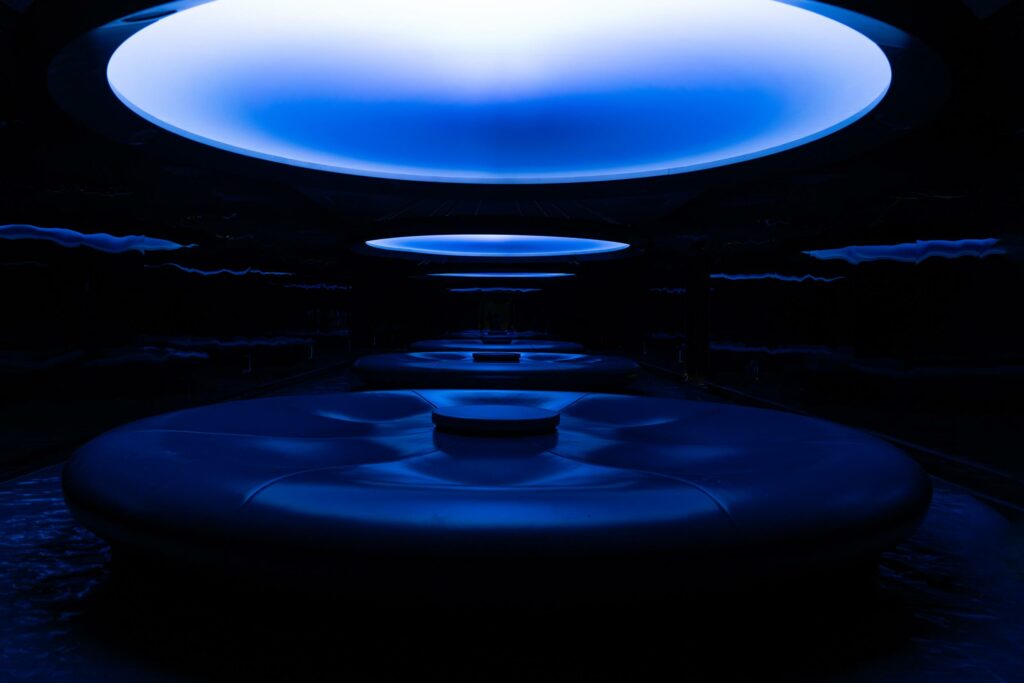
Visitors are then led to a tranquil zone where they recline on temperature-controlled, custom-made lily pad furniture and gaze upwards at a vast 4.5-meter projection for an open-eyed meditation looking into the canopy of a Lupuna (Kapok) tree.
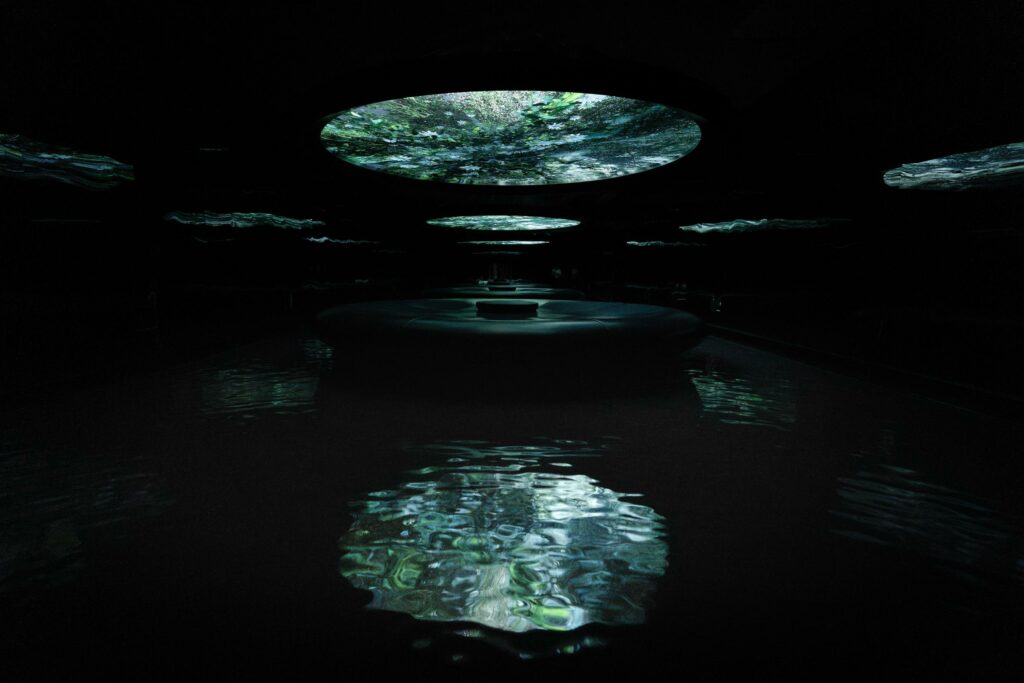
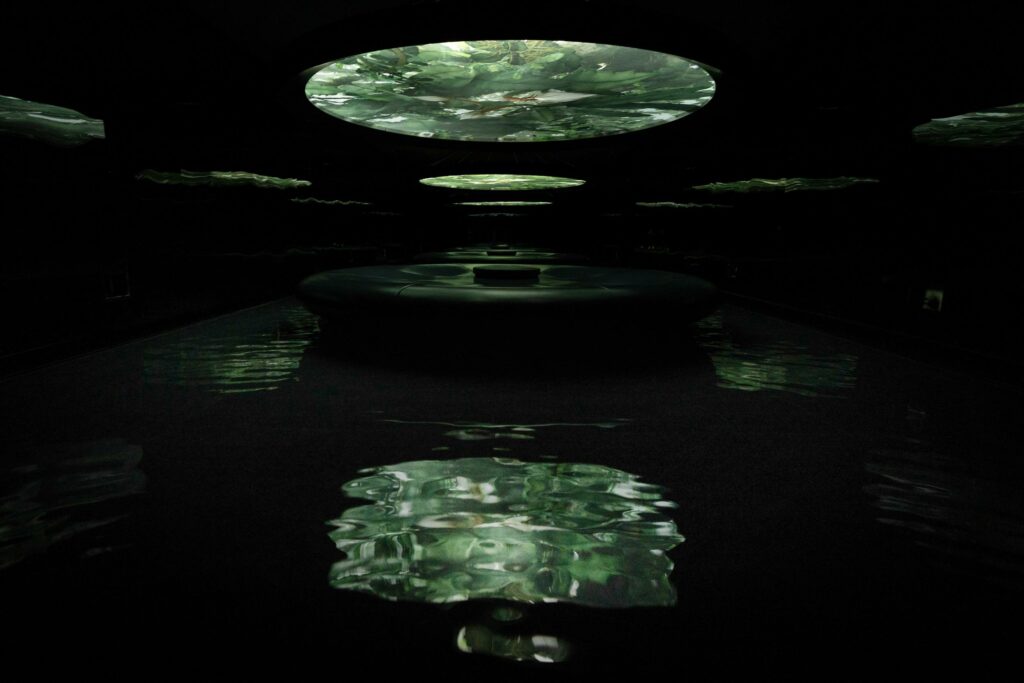
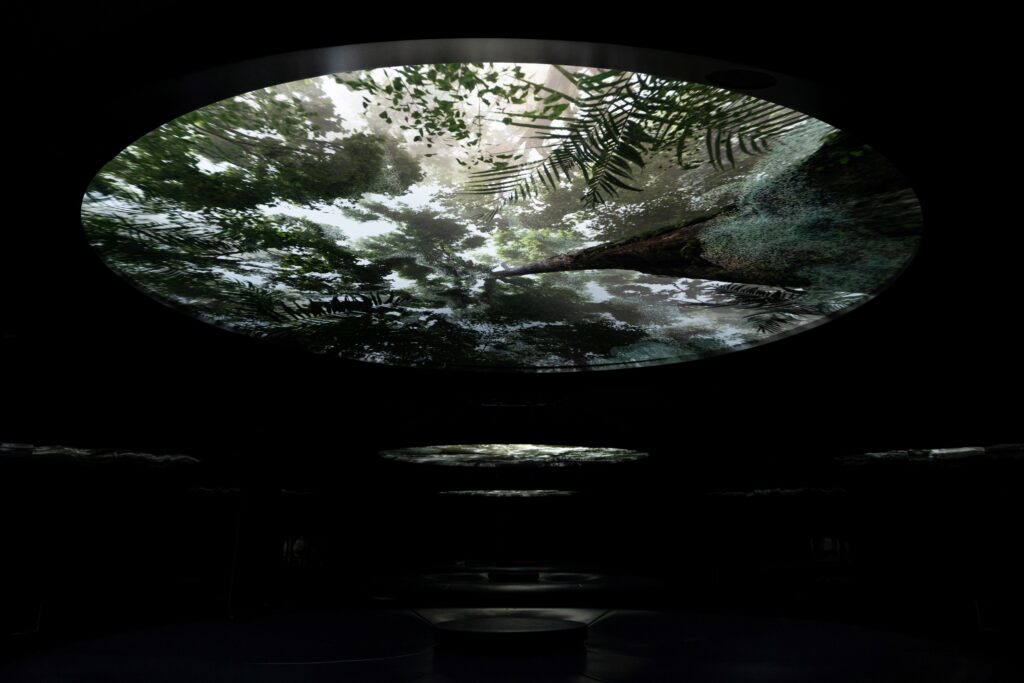
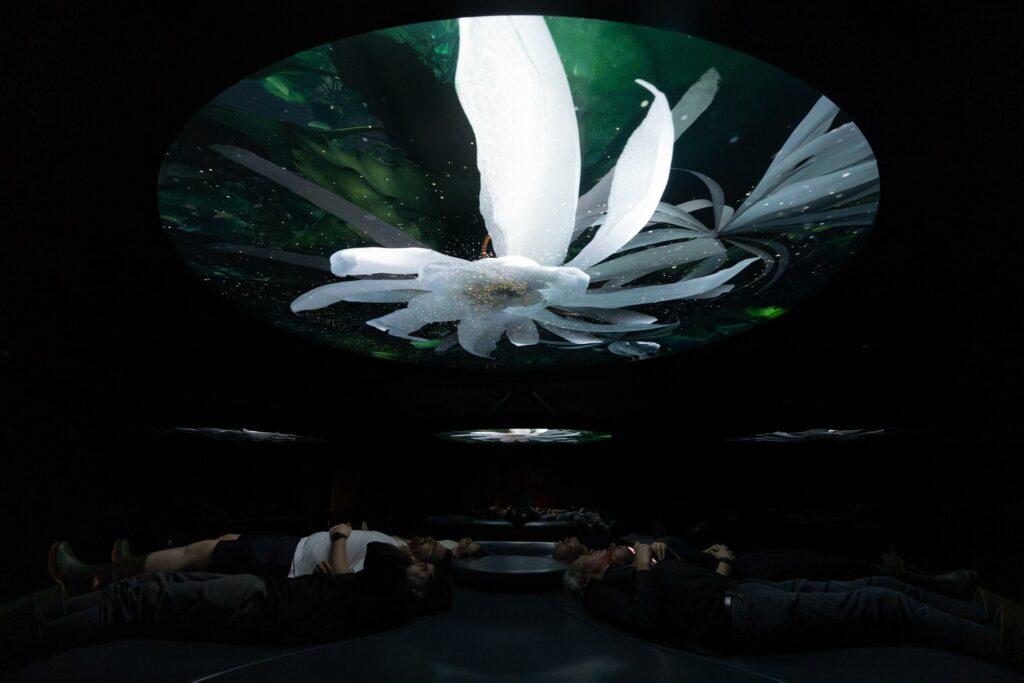
Three projected video artworks correspond to three levels of magnification: the tree, the branch, and the flower. The artworks transport the viewer into the heart of a rarely seen unfolding of nature, showing the symbiotic relationship between the towering Lupuna tree and the Queen of the Night flower housed high within its branches. The visual narrative compresses 24 hours in the rainforest into a 5-minute-long piece that interrogates the experience of time and space beyond the limitations of our perception.
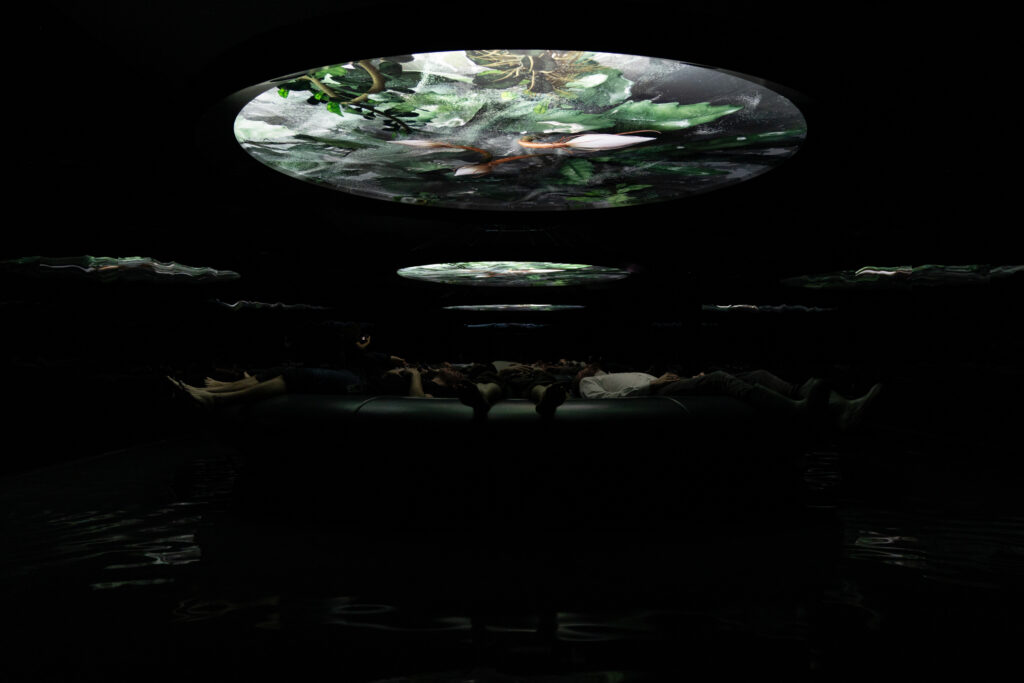
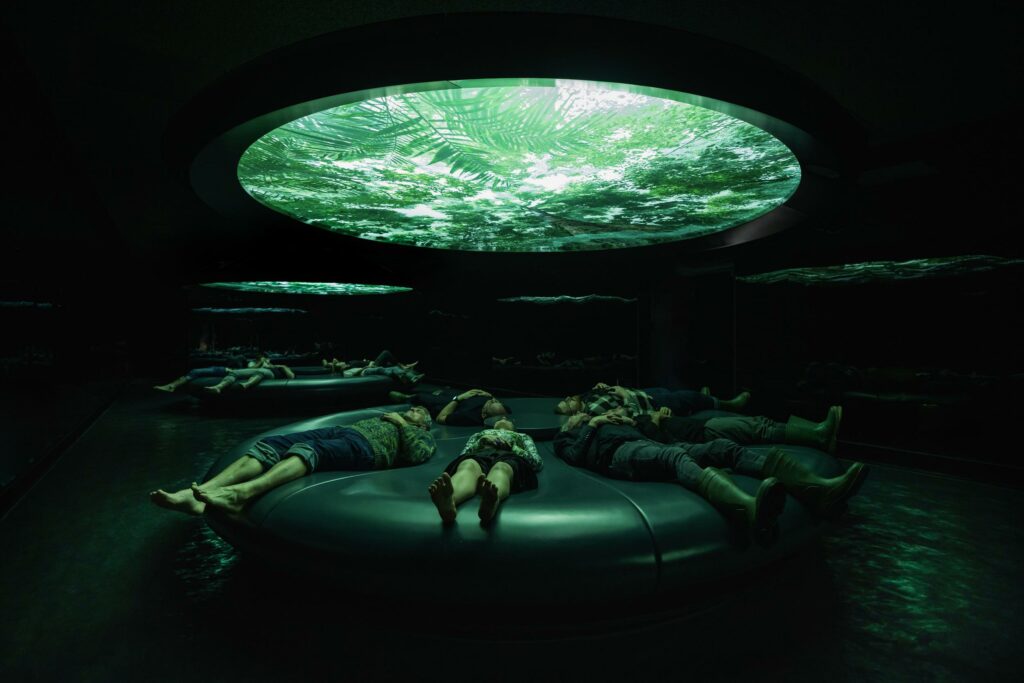
The Queen of the Night flower (Epiphyllum Oxypetalum), featured in the first magnification, is native to Central and South America, blooming only at night, it attracts nocturnal pollinators like bats and moths. As an epiphyte, it grows on other plants, like the towering Kapok tree, to escape competition and access resources. This artwork depicts this symbiotic relationship in Leticia, Colombia, showcasing the interconnectedness and adaptability of the rainforest ecosystem.
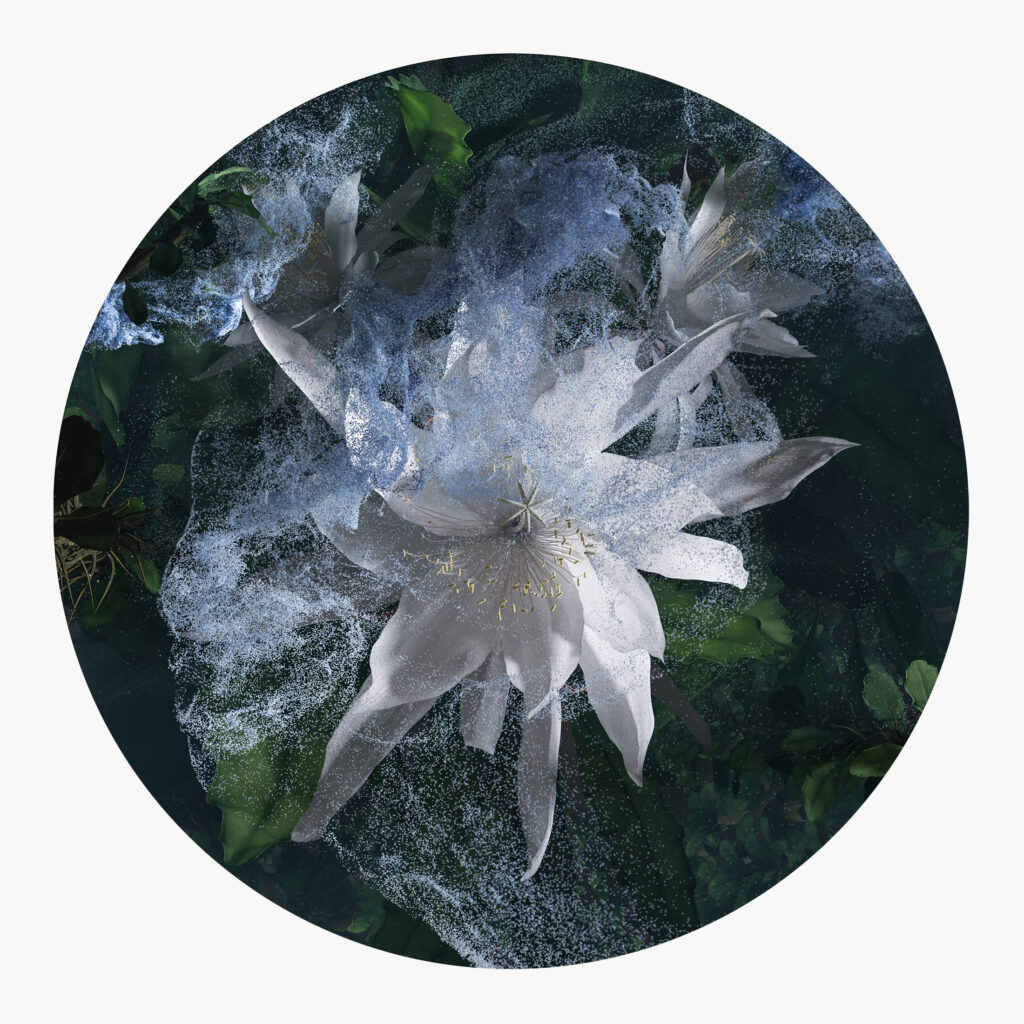
The second level of magnification focuses on the rich composition of epiphytes that live on the branches of Lupuna tree. Creepers, vines, and lianas are abundant in the canopy and make up a significant proportion of the vegetation in tropical rainforests. There are over 2,500 species of vines from about 90 families. Tropical rainforests have been home to entangled beings since the Eocene and this artwork aims to capture the essence of entangled life that make up rainforest canopies.
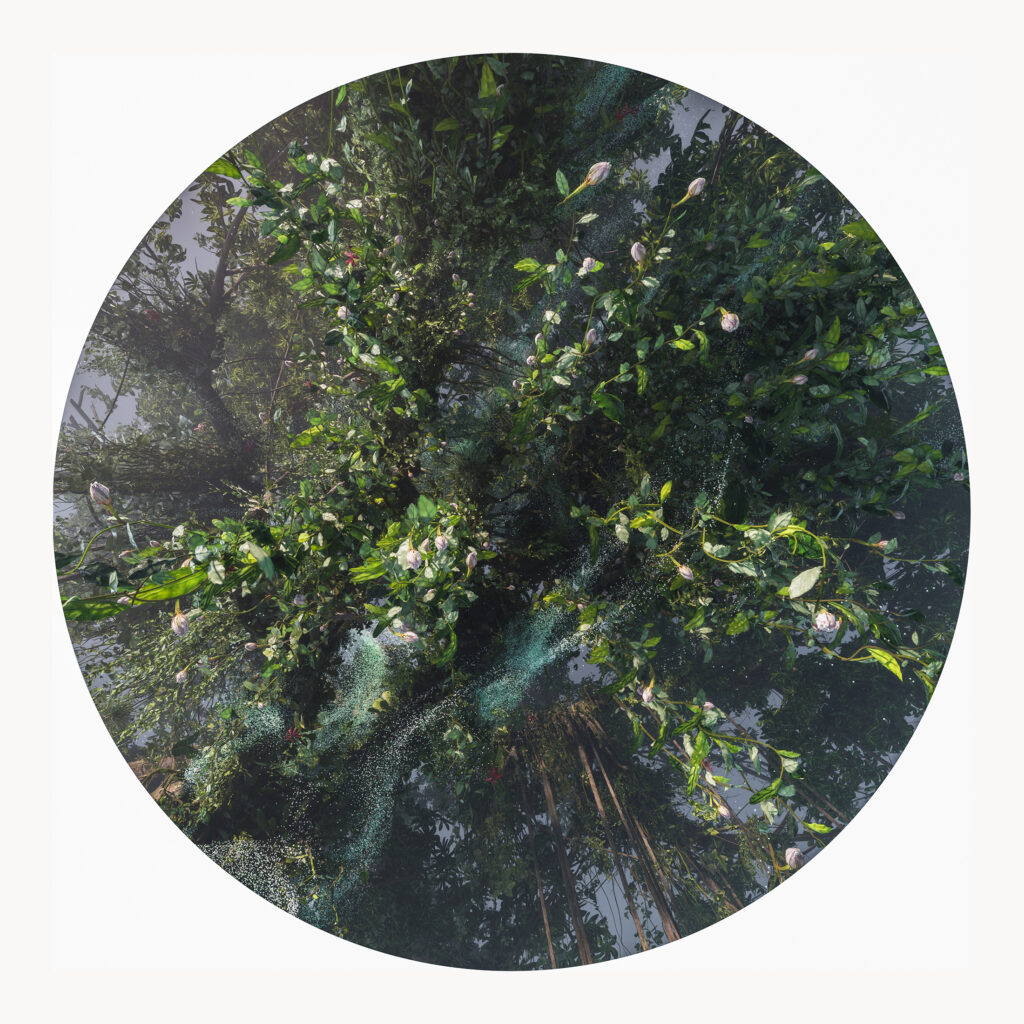
The Kapok (Lupuna) tree, in the third magnification, is an emergent tree of the tropical rainforests. It can grow to a height of 150 feet or more, towering over other trees in the rainforest. Emergent trees like the Kapok rise above the canopy of the rainforest and provide a home for plants who are dependent on sunlight. Their branches provide a habitat for countless epiphytes, which provide food and shelter for many types of insects and animals.
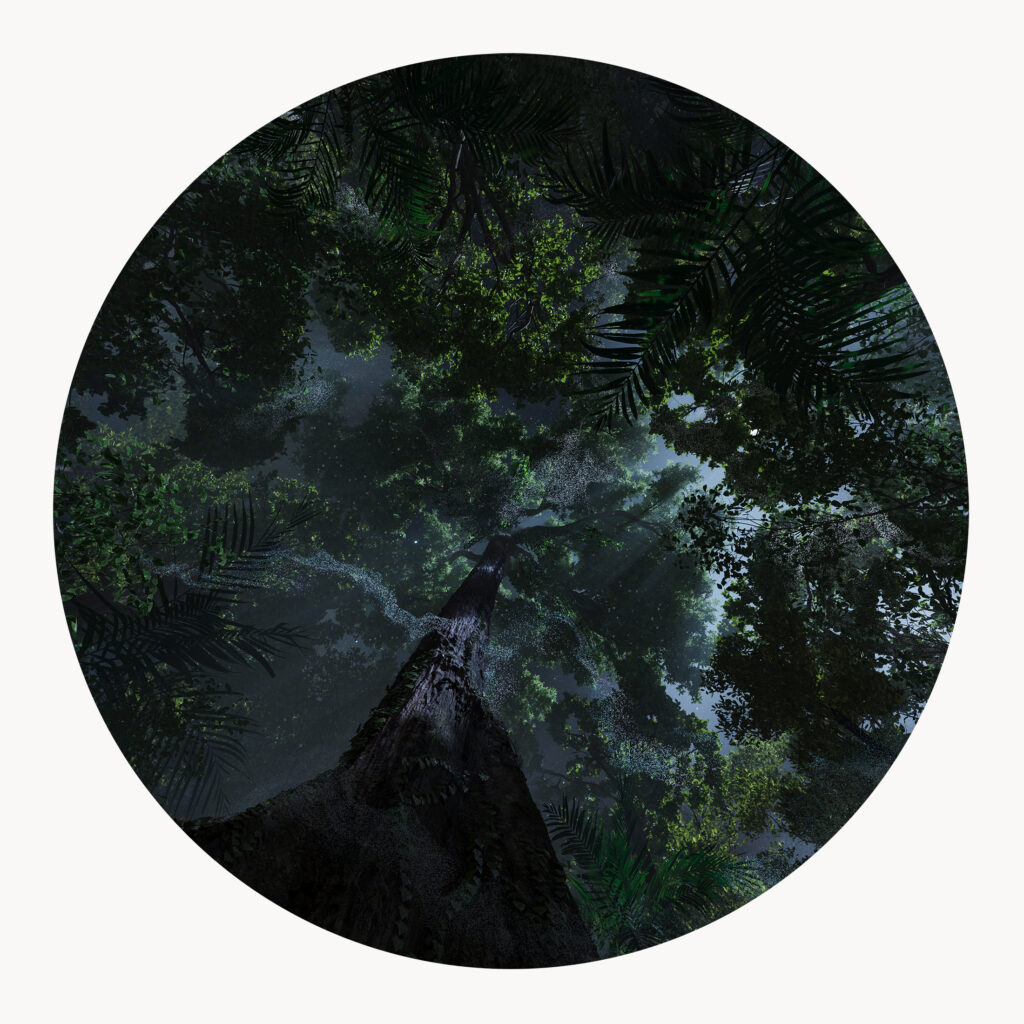
The Kapok (Lupuna) tree, in the third magnification, is an emergent tree of the tropical rainforests. It can grow to a height of 150 feet or more, towering over other trees in the rainforest. Emergent trees like the Kapok rise above the canopy of the rainforest and provide a home for plants who are dependent on sunlight. Their branches provide a habitat for countless epiphytes, which provide food and shelter for many types of insects and animals.
The multi-sensory site-specific installation Forest Bathing: Lupuna was commissioned by Thermengruppe Josef Wund and developed in collaboration with architecture and experience designer The Love Triangle and Wellness Innovation Consultancy White Mirror. The pieces bridge the gap between arts, nature, science and wellbeing, offering a new experiential opportunity in the wellness space. By aligning with cutting-edge research, the initiative aims to create an intentional space that significantly improves mental and physical wellbeing through the experience of art.